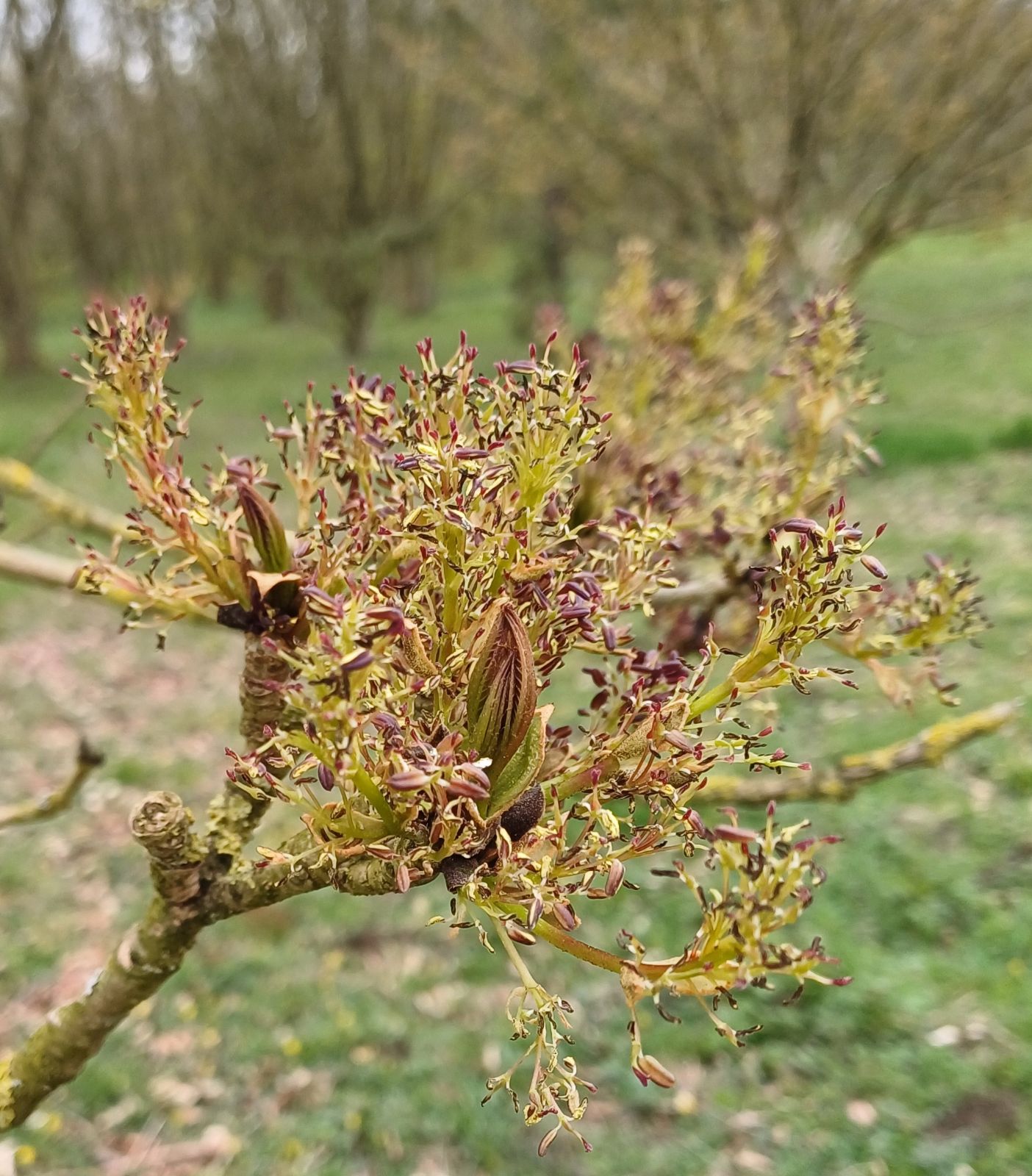Fraxinus spaethiana
Credits
Article from Bean's Trees and Shrubs Hardy in the British Isles
Recommended citation
'Fraxinus spaethiana' from the website Trees and Shrubs Online (treesandshrubsonline.
Genus
Synonyms
- F. serratifolia Hort., not Michx.
- F. sieboldiana of some authors, not Bl.
- F. platypoda sensu Dallim. in Kew Hand-list 1902, not Oliver
- F. stenocarpa smsu Rehd., not Koidz.
Other taxa in genus
- Fraxinus americana
- Fraxinus angustifolia
- Fraxinus anomala
- Fraxinus biltmoreana
- Fraxinus bungeana
- Fraxinus caroliniana
- Fraxinus chinensis
- Fraxinus cuspidata
- Fraxinus dipetala
- Fraxinus elonza
- Fraxinus excelsior
- Fraxinus floribunda
- Fraxinus griffithii
- Fraxinus holotricha
- Fraxinus lanuginosa
- Fraxinus latifolia
- Fraxinus longicuspis
- Fraxinus mandshurica
- Fraxinus mariesii
- Fraxinus nigra
- Fraxinus obliqua
- Fraxinus ornus
- Fraxinus oxycarpa
- Fraxinus pallisiae
- Fraxinus paxiana
- Fraxinus pennsylvanica
- Fraxinus platypoda
- Fraxinus pubinervis
- Fraxinus quadrangulata
- Fraxinus rotundifolia
- Fraxinus sieboldiana
- Fraxinus sogdiana
- Fraxinus syriaca
- Fraxinus texensis
- Fraxinus tomentosa
- Fraxinus 'Veltheimii'
- Fraxinus velutina
- Fraxinus xanthoxyloides
A tall tree in Japan but so far not over 40 ft high in Britain; young shoots shining, grey or yellowish brown. Leaves up to 11⁄2 ft long, with seven or nine (sometimes five) leaflets, which are rather leathery in texture, vivid green and glabrous above, paler and with a few scattered hairs beneath, rather coarsely irregularly round-toothed, shortly acuminate at the apex; the terminal leaflet is narrowly obovate, usually 6 to 61⁄2 in. long (but occasionally up to 8 in. long), 21⁄4 in. wide, the upper lateral leaflets almost as long, but narrower, forward-pointing, the lowermost pair always much shorter than the others; petiole slightly grooved, very much swollen at the base. Flowers in glabrous panicles from the scars of the previous year’s leaves; petals absent; calyx cup-shaped. Fruits broadly lanceolate, 15⁄8 in. long, usually narrowed at both ends.
Native of Japan; in cultivation at Kew in 1880 as “F. serratifolia”, but the trees now in the collection came from Späth’s nursery, one in 1896 as “F. serratifolia” and two in 1908 under their correct name; these trees are all grafted and undoubtedly derive from the tree in Späth’s nurseries from which Lingelsheim described the species in 1907. It is said to make a tall tree in its native habitat but the oldest tree at Kew, although more than seventy years planted, measures only 36 × 4 ft (1969). The species is very rare in cultivation but represented at East Bergholt Manor, Suffolk; Borde Hill, Sussex; and Lanarth, Cornwall. Few ashes have more handsome foliage than this, or of a more vivid green. The enlarged bases of the leaf-stalks are also seen in F. paxiana, but that species belongs to the section Ornus, in which the flowers are borne at the ends of leafy shoots of the current season’s growth. Before its flowers had been seen F. spaethiana was also erroneously placed in this section; in fact it belongs to section Fraxinus subsection Melioides, and is one of the few members of this sub-section found in E. Asia. It appears to be allied to F. platypoda.
From the Supplement (Vol. V)
With regard to the synonym F. platypoda sensu Dallim. in Kew Hand-list 1902, not Oliver, it should be added that F. spaethiana is in fact closely allied to F. platypoda Oliver, and included in it by T. Nakaike (op. cit., pp. 500, 503). But certain differences were pointed out under F. platypoda.
Two of the Kew specimens of F. spaethiana, pl. 1908, measure 36 × 3 ft and 31 × 2 ft (1984) and there are others at Talbot Manor, Norfolk, 31 × 11⁄2 ft (1978); and the National Botanic Garden, Glasnevin, Eire, pl. 1911, 33 × 21⁄4 ft (1974).




